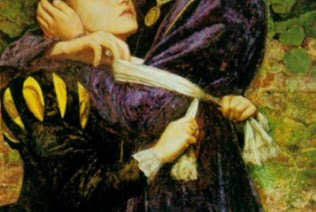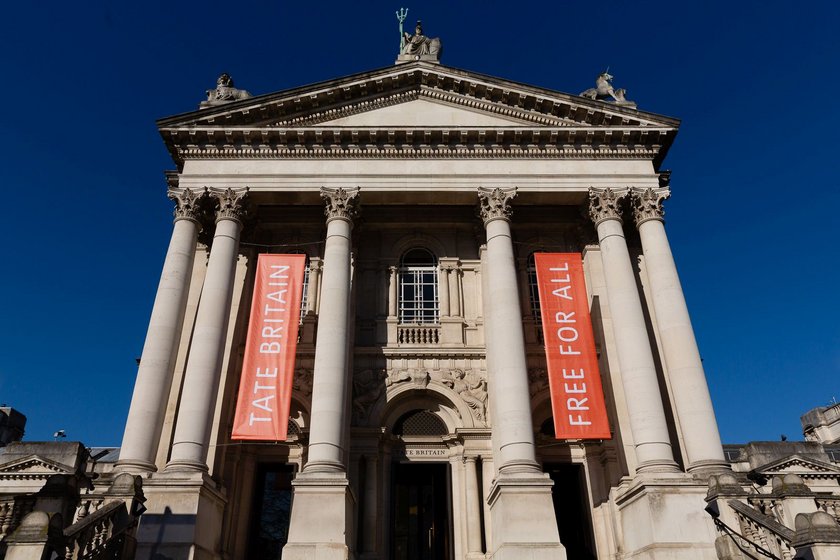A Huguenot, on St. Bartholomew’s Day: Art, History, and Hidden Stories
When history and art intertwine, they create powerful narratives that echo across time. One such masterpiece is A Huguenot, on St. Bartholomew’s Day, a stunning painting by John Everett Millais. This artwork, rich in romance and tragedy, transports viewers to one of the most harrowing events in French history—the St. Bartholomew’s Day Massacre of 1572.
 |
| A Huguenot, on St. Bartholomew’s Day |
Who Were the Huguenots?
The Huguenots were French Protestants who followed the teachings of John Calvin. In a deeply Catholic France, their presence led to intense religious conflicts, culminating in the infamous St. Bartholomew’s Day Massacre. On August 24, 1572, thousands of Huguenots were murdered in Paris and throughout France in a brutal purge ordered by the Catholic monarchy. This event left an indelible scar on French history and forced many Huguenots to flee the country, seeking refuge in England, the Netherlands, and America.
 |
| St. Bartholomew's Day massacre in 1572 |
The Story Behind Millais’ Masterpiece
John Everett Millais, a founding member of the Pre-Raphaelite Brotherhood, painted A Huguenot, on St. Bartholomew’s Day in 1852. The artwork captures a heart-wrenching moment between two lovers caught in the chaos of the massacre. The man, a Huguenot, refuses to wear the white armband that would signify his conversion to Catholicism. His lover, a Catholic woman, desperately tries to persuade him, knowing that his refusal will lead to his death.
Millais masterfully uses soft lighting, delicate brushstrokes, and rich details to bring this emotional struggle to life. The ivy-covered wall, symbolizing steadfast love, contrasts with the tragic fate awaiting the young man. The composition's tenderness makes the viewer feel the weight of love, faith, and sacrifice.
Fun Facts About Millais and the Painting
- Symbolism of the White Armband – In the painting, the Catholic woman attempts to tie a white armband around her Huguenot lover's arm. This armband was a symbol used during the St. Bartholomew's Day Massacre to identify Catholics. The man's refusal to wear it signifies his steadfast commitment to his faith, even in the face of imminent danger.
- Inspired by Opera – Millais was inspired by Les Huguenots, an opera by Giacomo Meyerbeer. The opera’s themes of forbidden love and religious conflict deeply influenced the painting’s romantic tone.
- Historical Context – The painting is set during the St. Bartholomew's Day Massacre of 1572, a tragic event where thousands of Huguenots were killed in France. This context adds depth to the depicted scene, highlighting the perilous circumstances surrounding the couple's interaction.
- Emotional Tension – Millais masterfully captures the emotional struggle between love and duty. The woman's pleading expression and the man's gentle yet firm refusal convey a poignant narrative of love caught amidst religious conflict.
- Artistic Techniques – The use of natural light and detailed textures enhances the realism of the scene. Millais' attention to detail, from the intricate ivy leaves to the delicate fabric folds, draws viewers into the intimate moment shared by the couple.
- The Purple in the Painting – A Color of Luxury and Prestige. One particularly striking aspect of A Huguenot is the presence of purple hues, which were considered rare and expensive during Millais’ time. Purple dye was historically derived from sea snails, making it a costly color that symbolized wealth and nobility. In the painting, its subtle use adds to the richness of the scene, enhancing the emotional intensity and reinforcing the theme of sacrifice amidst opulence.
- A Love Story in Real Life? – The models for the painting, Arthur Hughes and Annie Miller, were romantically linked. Hughes was also an artist and a friend of Millais, while Miller was a famous Pre-Raphaelite muse.
- A Pre-Raphaelite Gem – This painting marked Millais’ shift towards a more realistic style, blending historical storytelling with Pre-Raphaelite detail. The Pre-Raphaelites aimed to return to the vibrant colors and intricate realism of early Renaissance art.
- A Painting with Many Lives – The artwork became so iconic that it was widely reproduced in engravings and prints, making it a favorite among Victorian art collectors.
The Huguenot Influence on the World
Despite persecution, the Huguenots left a lasting impact. Many settled in England, where they contributed to industries like silk weaving. Others shaped American history, founding settlements in the New World. Their influence can be seen in place names, cultural traditions, and even culinary contributions—some argue that French Huguenot refugees played a role in developing modern-day fried potatoes (precursors to French fries!).
Who Was John Everett Millais?
John Everett Millais (1829–1896) was one of the most celebrated British painters of the 19th century. Born in Southampton, England, Millais displayed exceptional artistic talent from a young age, becoming the youngest student ever admitted to the Royal Academy Schools at just 11 years old.
In 1848, he co-founded the Pre-Raphaelite Brotherhood alongside Dante Gabriel Rossetti and William Holman Hunt. This movement sought to reject the academic painting style of the time, instead emphasizing vibrant colors, intricate details, and compositions inspired by medieval and early Renaissance art.
Throughout his career, Millais evolved from the meticulous, highly detailed style of the Pre-Raphaelites to a broader, more commercial approach, which eventually made him one of the most successful artists of Victorian Britain. He was later knighted and became the President of the Royal Academy in 1896.
 |
| John Everett Millais (1829–1896), Artist |
Where to Find It
If you want to see A Huguenot, on St. Bartholomew’s Day in person, you can visit the Tate Britain in London. The painting is part of their permanent collection and is displayed among other masterpieces from the Pre-Raphaelite Brotherhood.
Address: Millbank, London SW1P 4RG
Why You Should See It in Person
Experiencing this painting in person allows you to fully appreciate the delicate brushwork, the depth of colors, and the emotional intensity that digital images can’t quite capture. The details in the lovers’ expressions, the textures of the fabric, and the play of light and shadow are far more striking when viewed up close. Standing before the painting, you can almost feel the tension of the moment, making it an unforgettable experience for art lovers and history enthusiasts alike.
Why This Painting Still Resonates Today
At its core, A Huguenot, on St. Bartholomew’s Day speaks to universal themes—love, conviction, and the human cost of intolerance. It reminds us of the struggles people face when their beliefs put them at odds with society. In a world still grappling with religious and ideological divides, Millais’ painting remains as poignant as ever.
If you ever find yourself at the Tate Britain, where this masterpiece is housed, take a moment to stand before it. Let the tender expressions and intricate details tell you a story of love and defiance—one that continues to inspire and move audiences more than a century later.
Do you have a favorite historical painting that tells a compelling story? Share your thoughts in the comments below!
You may like
Read more:
💙 The Enigmatic Elegance of Portrait of a Woman of the Hofer Family




